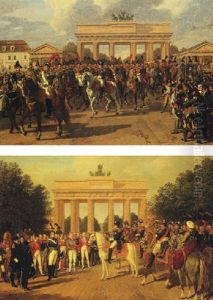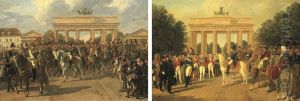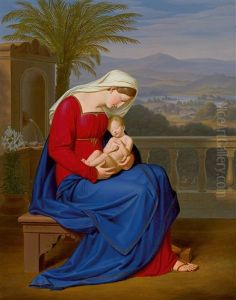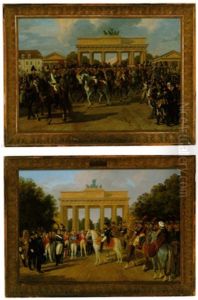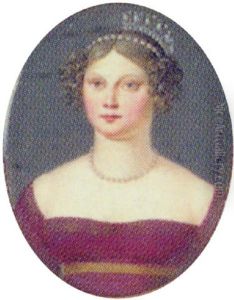Heinrich Anton Dahling Paintings
Heinrich Anton Dähling was a German painter born in Rostock on April 15, 1773. His artistic journey began under the guidance of the portrait painter Johann Friedrich August Tischbein at the Academy of Fine Arts in Kassel, Germany. Dähling's early career was significantly influenced by Tischbein's classical approach to art, which was prevalent during that period. This foundation laid the groundwork for Dähling's development into a skilled painter, recognized for his contribution to early 19th-century German art. In 1799, seeking to further his artistic education and experience, Dähling moved to Berlin. There, he became a part of the city's burgeoning art scene, interacting with other artists and intellectuals of the time. His work during this period began to reflect a deeper exploration of emotional expression and narrative depth, qualities that would come to define his artistic legacy.
Dähling's oeuvre primarily includes religious and historical scenes, portraits, and, to a lesser extent, landscapes. His ability to imbue his subjects with a sense of emotional depth and realism was particularly noted in his religious and historical paintings. These works often depicted scenes with a dramatic flair, showcasing Dähling's skill in composition and his adept use of light and shadow to enhance the storytelling aspect of his paintings. Throughout his career, Dähling remained committed to the classical principles of art, even as the Romantic movement began to take hold in Germany. His style, however, did incorporate some of the Romantic movement's emphasis on emotion and the sublime, blending classical ideals with the emerging trends of his time.
In addition to his painting, Dähling also served as a professor at the Berlin Academy of Arts, a position that allowed him to influence a new generation of artists. His teachings emphasized the importance of classical art principles while encouraging students to explore their individual artistic expressions. Dähling's impact on the art world extended beyond his own works, through his mentorship and guidance to young artists.
Heinrich Anton Dähling's contributions to German art were recognized in his time, and he was esteemed by his contemporaries for his dedication to the craft of painting and education. He died on June 5, 1850, in Berlin, leaving behind a legacy that not only includes his own paintings but also the impact he had on the students he taught and mentored. Today, Dähling's works are a testament to the transitional period in German art, straddling the line between the classical and romantic eras, and they continue to be studied for their technical skill and emotional depth.
